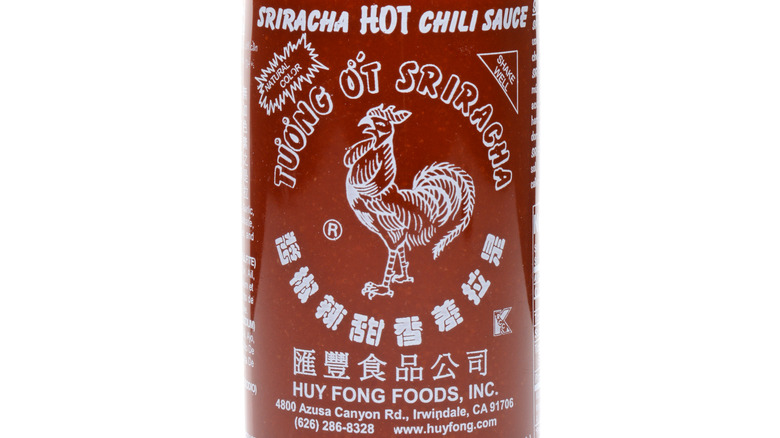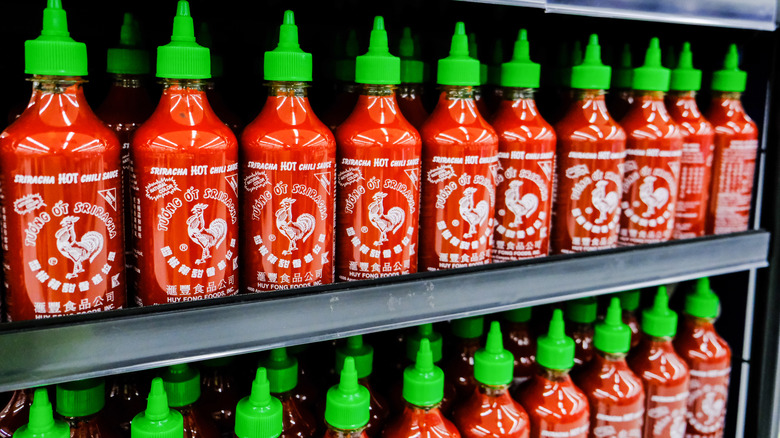Here's How Sriracha Got Its Name
Mixed into salsa, drizzled onto tacos, or poured generously over a breakfast sandwich, sriracha is a versatile and highly popular condiment. The red, tangy chili-flavored sauce consistently ranks on top hot sauce lists. In 2010, Bon Appétit named sriracha as Ingredient of the Year. And in 2019, the brand brought in $150 million in annual revenue (via Vietcetera). Sriracha is owned by the brand Huy Fong, the creation of David Tran, a Vietnamese man who brought sriracha to California in 1979 (per History Daily). The name of his company is taken from the boat he rode from Vietnam, and the recipe is his attempt to share a taste of home.
When Tran began to bottle this spicy red sauce to sell, he filled glass containers with a spoon and drove a van to deliver the product (via LA Times). Marketing was never necessary; sales have increased nearly 20% each year, and the company continues to grow — there's even a documentary made about Tran's success. His story is a true "American Dream," but according to Spoon University, some credit may be due to an earlier, thicker version of the sauce made in Thailand.
From the Gulf of Thailand to shelves around the world
From her garden in the gulf-side town Si Racha, 71-year-old Saowanit Trikityanukul told NPR that though her grandmother is credited as the first to prepare and sell sriracha in her Vietnamese community, it was her great-grandfather who came up with the recipe. Inspired by travels throughout neighboring countries, his idea was to create an all-encompassing sauce that could be the perfect combination of sour, sweet, and salty; a flavoring easily paired with everyday Thai cuisine. While original batches of the chili-garlic paste were shared with family and friends in Si Racha, it wasn't long until the sauce was ordered by more distant buyers (via Thrillist). The recipe was never patented, however, and different versions – along with a variety of flavors – have appeared in markets worldwide.
Give sriracha your own spin by converting it into powder to sprinkle on eggs or add a satisfying kick to your next homemade banh mi sandwich.

